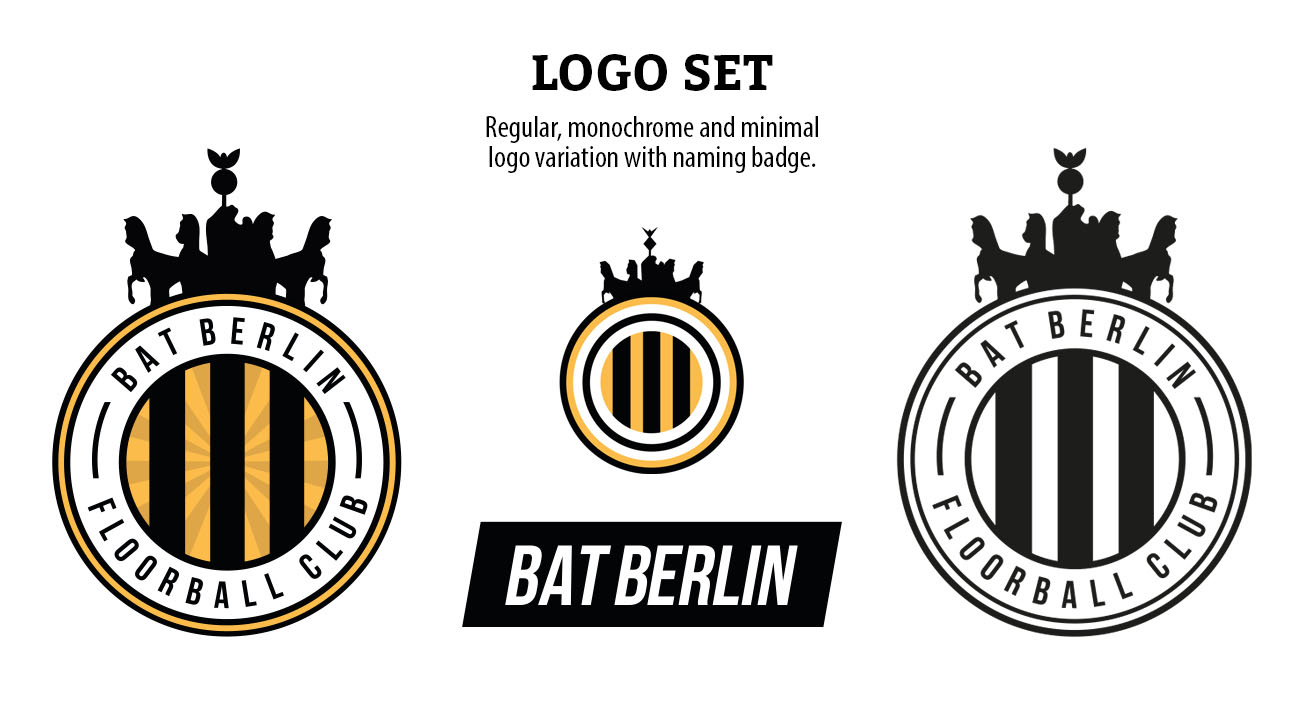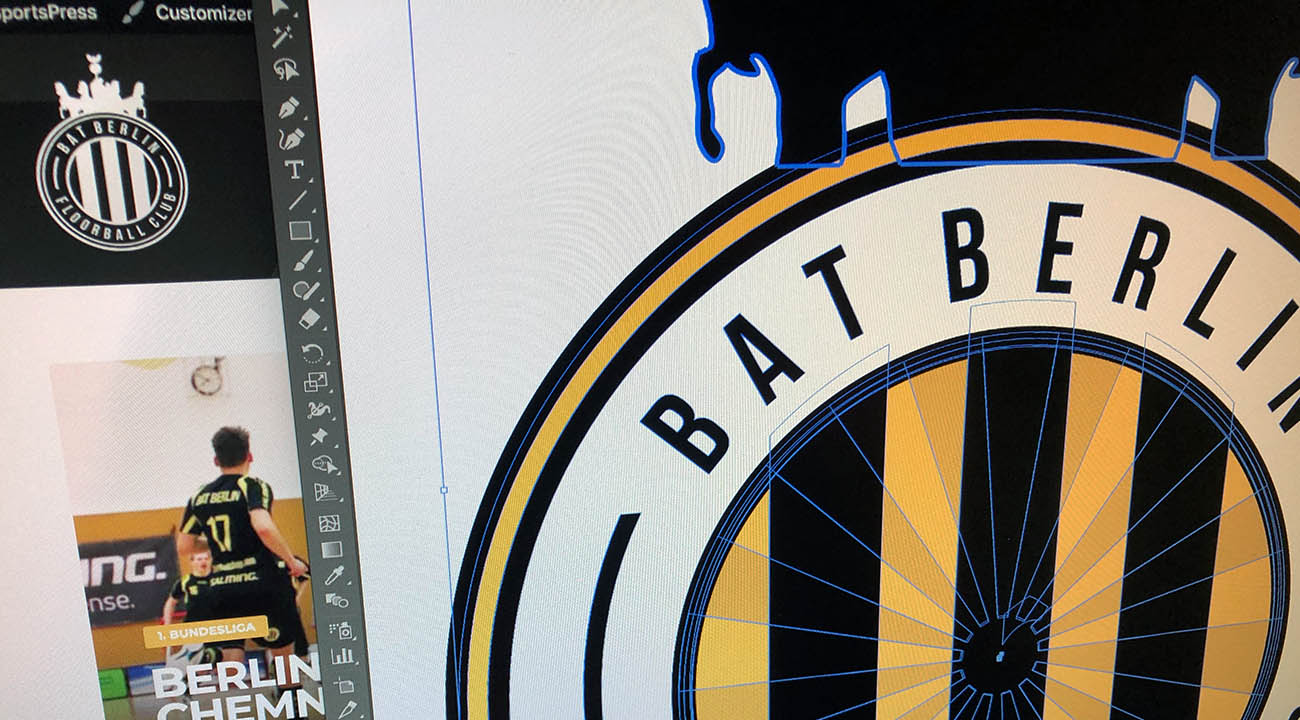We all love to talk about floorball as a progressive and modern discipline. Unfortunately most of our clubs are far away from working with appealing designs. 8 rules how to change this.
First, let us clarify that this article shall not focus on your club’s Corporate Design as a whole. Perhaps we’ll come back to that later. Some of our rules apply for that as well anyways.
But now we’re going to aim at your primar visual signature, the logo. It compresses your whole club culture into one symbol. Your logo is responsible for identification, authentication and affiliation. You should take an effort.
___STEADY_PAYWALL___
1. Know who you are
The most difficult part comes right at the beginning. Here you should ask yourself, who you actually are. Tough question, sure. But you need to define the personality of your club to know what design really fits to you.
Get together with a group of club members and brainstorm. Name attributes that you connect with your club. It can be virtues and qualities, but can also colors or real objects (i.e. buildings or animals). After your melting pot is full, try to extract the attributes you found unique and precise. Write them down and let them rest.
2. Seek inspiration
Now it’s time to look around. Don’t focus on floorball logos only. Check out logos in general and then narrow your search around sports clubs logos.
There are several pages, that will provide you with very solid work. You can either check out guides and blogs (i.e. sportslogos.net) or you visit platforms, where designers publish their work and filter what you need (i.e. Dribbble). On such platforms can you might even stumble upon some designer to hire.
3. Pick a type
There are several different types of club logos. Some stick to heraldic traditions, others work with mascots and skylines. The passage can be fluent.
To be honest, here we have a faible for Americans. In Europe too many clubs stick to obsolete traditions. In consequence they are unable to adapt to new graphical, technical and cultural needs. In the USA or Canada clubs understand that a logo is a major marketing tool.

4. Call a pro
Now that you know what you want somebody has to do the job. You have Photoshop on you laptop? And you were really talented in art classes? Don’t you dare! This is bigger than your unfulfilled artistic dreams, dude.
Nowadays, there are plenty of talented folks, who know how thinks work (check their references anyways). It will cost money, but it will pay off. Of course, you can hire someone on fiverr for 50 €, but the result might become mediocre. If you find some solid freelancer on Dribbble or Behance, the fee will be starting somewhere around 200 € for very basic stuff and climb up depending on your demands. Still, if you have to pay 500 € or even more, think of the possible sponsors, who won’t be interested in you, without a proper visual signature.
It doesn’t matter who you find and if they are specialized on the whole segment of Visual Identities or if they are „just“ good designers. They will need your contribution anyways. Try to list the attributes you brainstormed and present some logo examples you found online. A visual reference will make it much easier to a designer to follow your ideas.
5. Keep it simple
Though some designers might take it from here, you should still know a few key attributes of a good club logo.
Whatever motive you work with, always use as few details as possible. The more curls and shades and letters you use, the heavier your logo will seem. This will lower the memorability (simple logos are easier to remember), the visibility (simple logos are easier to be recognized) and the versatility (simple logos are more flexible) of the logo, too.
Pick some easy motive, that you identify yourself with. You have to decide if it’s necessary to embed floorball elements (sticks, balls etc.) or if you work with a more neutral design (perhaps you’ll want to add a discipline one day). Always ask for feedback. It’s the easiest way to avoid connections you (as the designer) are blind for (there are many bad examples).
Try to stick to not more then two colors (apart of black and white). Actually you need only one, the second color should only emphasize details. If you need more variance, work with shades of these two colors. There are plenty of online tools to help you with this task (i.e. Paletton). By the way, if you want to know more about colors, read our article „10 Rules How Your Floorball Club Should Work With Colors„.
6. Be versatile
Unfortunately it’s not enough to create a bold logo and call your job done. With all the channels you’ll want to brand (merchandising, social media, signatures etc.) you should prepare a whole set of designs.
If you have a very complex logo (and you cannot change this fact) create an alternation that skips or replaces tiny details. Too complex logos with little fonts and emblems are the nightmare of every printer. Furthermore you need a monochrome version for black and white layouts (letters, prints etc.). Beware, it’s not enough to greyscale. If you want to keep the proper shades, your designer has to create a special monochrome version.

7. Vectorize
Most designers will create your logo in a program such as Photoshop or Illustrator. The result will be editable files ending with extensions such as .psd or .ai. However, to be able to work with your logo properly it has to be available in a vectorized file format ending i.e. with .eps.
Vectorization is the conversion of raster graphics into vector graphics. Your logo stops being a simple picture and becomes a pool of lines and curves. A vectorized format allows you to scale your logo up and down as much as you need without any loss of quality. If you do the same with a .jpg or a .png your logo will appear blurry and pixelated.
8. Protect your baby
Though you’ll need variations of your logo, these have to be designed professionally. Apart of that your logo must remain untouchable.
Usually companies and professional clubs provide employees, partners and media with a style guide that explains how to work with your designs (see an example by the University of Rochester).

